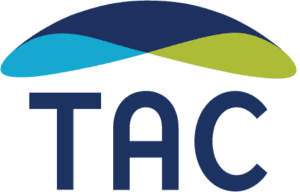“COME JOIN US TO REIMAGINE the homeless system,” the co-leads of a new U.S. Department of Housing and Urban Development (HUD) initiative said to each of us — with an enthusiasm and conviction that we found intoxicating. “And while you are at it, take a deep dive within yourself and challenge how you show up as a technical assistance provider and how you engage with others.” How could we resist?
This invitation was to join the HUD Coordinated Entry Equity Demonstration Project (Equity Demo) as a community coach. The primary goal of the Equity Demo is to help communities design and adopt system-wide assessment and prioritization processes that will increase racially equitable housing stability outcomes for people experiencing homelessness. With the support of the community coaches and a data team, participating communities identify data gaps that are holding them back from making a more equitable coordinated entry system; undertake community-based research to fill those gaps; and design new solutions to achieve better outcomes. At every stage of the process, the needs and insights of people of color, and of people with lived experience of homelessness, are centered.
In a departure from what many technical assistance (TA) providers and recipients are used to, we found that the Equity Demo asked both communities and coaches to resist rushing the process, and to take an approach that would require honesty, vulnerability, and collective care. The coordinating team modeled how to find value in uncertainty and failed attempts by sharing their own vulnerable and courageous stories. Community coaches were urged to stay alert for ideas that might come disguised as unrealistic, too simple, or unpolished.
This new, reimagined approach was disorienting. Several of the community coaches had doubts if we were truly adding value and fulfilling our obligations under the contract. Were we to take the lead in meetings by reminding our communities of the objectives and inserting our experience and expertise to guide the process — or could we really allow for those long moments of silence that seem to go on forever, but that are necessary for one to reflect, react, and think creatively?
But as we asked questions and shared ideas, our uncertain days stacked into clarifying weeks. Our habitual focus on the skills and expertise we would add as TA providers was gradually squeezed out to make room for curiosity. Thoughts that were dropped into conversations by our partners with lived experience/expertise in homelessness were scooped up eagerly for further examination. We used phrases that are not common in professional settings, such as “What is your reaction to….?”; “How are folks feeling about….?”; “I want to hold space for…”; and “We need to course-correct!”
This project has shown us how coming to a meeting with an insatiable appetite to listen deeply for the purpose of understanding, and centering the voices of those with lived expertise, can act as equalizers. This mindset gives TA providers the cultural humility that allows us to be truly in service to the communities we have the privilege to engage. There are some key lessons we learned that we want to share with you to help deepen the critical work of weaving racial equity and social justice into every aspect of technical assistance.
Acknowledge Inequity
Racism and other forms of oppression are both the cause and the persistent drivers of inequities we see today. Approaches that fail to recognize that racial groups in the United States sit differently in relation to power, resources, and opportunities — both historically and today — are inadequate. Our work as TA providers has potential for tremendous impact in helping communities develop systems that undo institutional racism and build momentum towards creating communities where everyone has opportunities to thrive.
Transform Racist Social Norms
Undoing the impacts of structural and institutional racism in our society continues to be a challenge of enormous importance. Some might point to the lack of resources as the culprit, or raise up the need for new, innovative solutions; however, in a country of great wealth and with proven solutions sitting on shelves or not brought to scale, we notice a deeper issue at play in maintaining inequity. Social norms, which are the invisible codes that regulate human behavior, often hold social problems in place by undermining policy, resource, and programming interventions that benefit the overall public good. These racialized social norms favor costly and harmful interventions that artificially divide people who experience poverty into two categories: worthy white people and unworthy people of color. We have seen this racialized “unworthy vs. worthy poor people” dynamic in the contrast between the War on Drugs — a criminal justice response to the crack cocaine epidemic that mainly impacted Black communities — and the health and human services response to the more recent opioid crisis, which impacted mostly white communities. Solving this challenge requires a concerted effort to change both personal and social norms by moving away from technical and transactional TA approaches, and toward more integrated and transformative assistance that addresses root causes.
To provide technical assistance that is grounded in racial equity and social justice is to accept that a critical part of our work involves education and persuasion to help communities identify the root causes holding social inequities in place. Further, this approach to TA relies on a transdisciplinary approach, in which the team working on any complex problem is strengthened by both professional and lived expertise. Both of these perspectives are essential to develop solutions that minimize harm and maximize benefit for all, especially for groups that have experienced a long legacy of state-sanctioned exploitation, redlining, and disenfranchisement. Centering lived expertise requires a shift from the model of development to a recognition that “those closest to the problem are closest to the solution, but furthest from resources and power” (the slogan of the grassroots criminal justice reform organization JustLeadershipUSA).
Unearth Root Causes
Racial equity TA advances the work from a transactional, incremental, and Band-Aid approach to one that instead unearths the persistent drivers of inequity and sets a path forward to a more transformed state. Deepening our practice to stimulate transformative change in communities is both head and heart work, because success requires the ability to reflect deeply on the socialization that drives our own explicit and unconscious biases and also influences our worldviews, judgments, and behaviors. This work involves reflecting deeply upon how we all have been born and programmed into a system of white supremacy culture and anti-Blackness. The foundation of our country’s economy was built off of the genocide and exploitation of Black, Brown, and Native bodies. We are all suffering, consciously and unconsciously, from the virus of internalized racial oppression. There are two sides of racial oppression — internalized racial superiority and internalized racial inferiority — that maintain the social problems we see today. James Baldwin once commented: “Our dehumanization of the Negro is indivisible from our dehumanization of ourselves; the loss of our own identity is the price we pay for our annulment of his.”
It is also critical for us to continually sharpen our racial equity and social justice analysis by learning from history; the inequities around us are the long legacy of centuries. Understanding the root causes of the present-day manifestations of inequity fortifies us with the knowledge to identify, describe, and dismantle institutional racism and oppression.
Be a Liberated Gatekeeper
Technical assistance providers play a gatekeeper role, with tremendous influence in helping shift power to under-resourced communities in ways that restore decision-making agency and establish mutual accountability. Ron Chisom, cofounder of the People’s Institute for Survival and Beyond, often reminds students that “Poor Black, Brown, and Native people don’t need programming — they need their power back.” By recognizing the power to influence that we do have as TA providers, we can become liberated gatekeepers, using our role to help restore power to poor and disenfranchised communities. But we must remember that you cannot give what you don’t have. Racial equity work requires deep reflection and continual internal work in order to facilitate transformation in the communities we serve.
Find more information in the HUD Exchange collection of Racial Equity resources.




